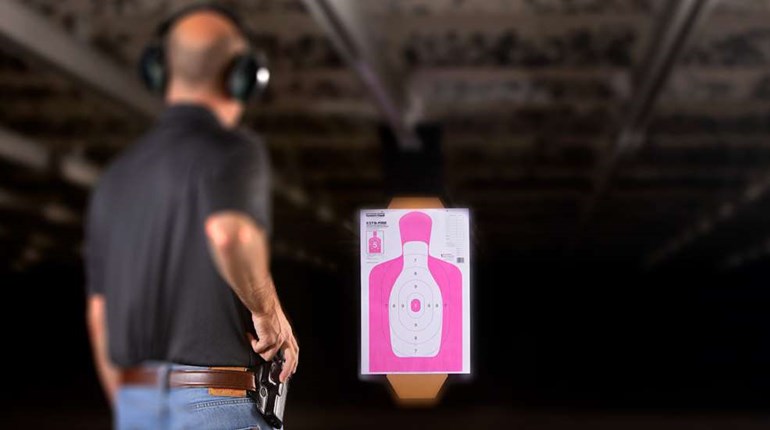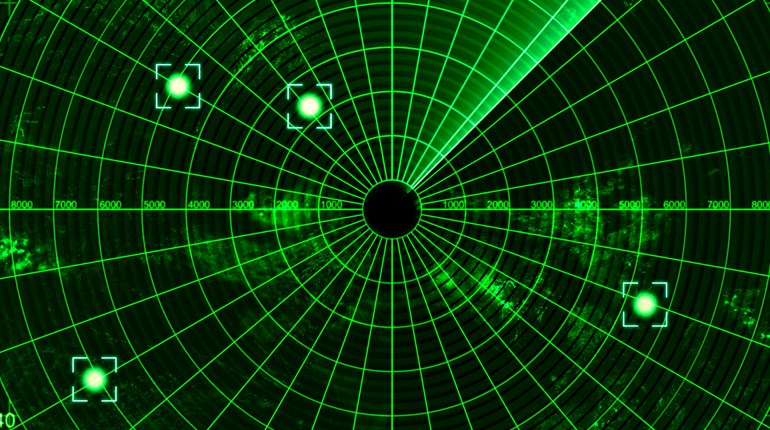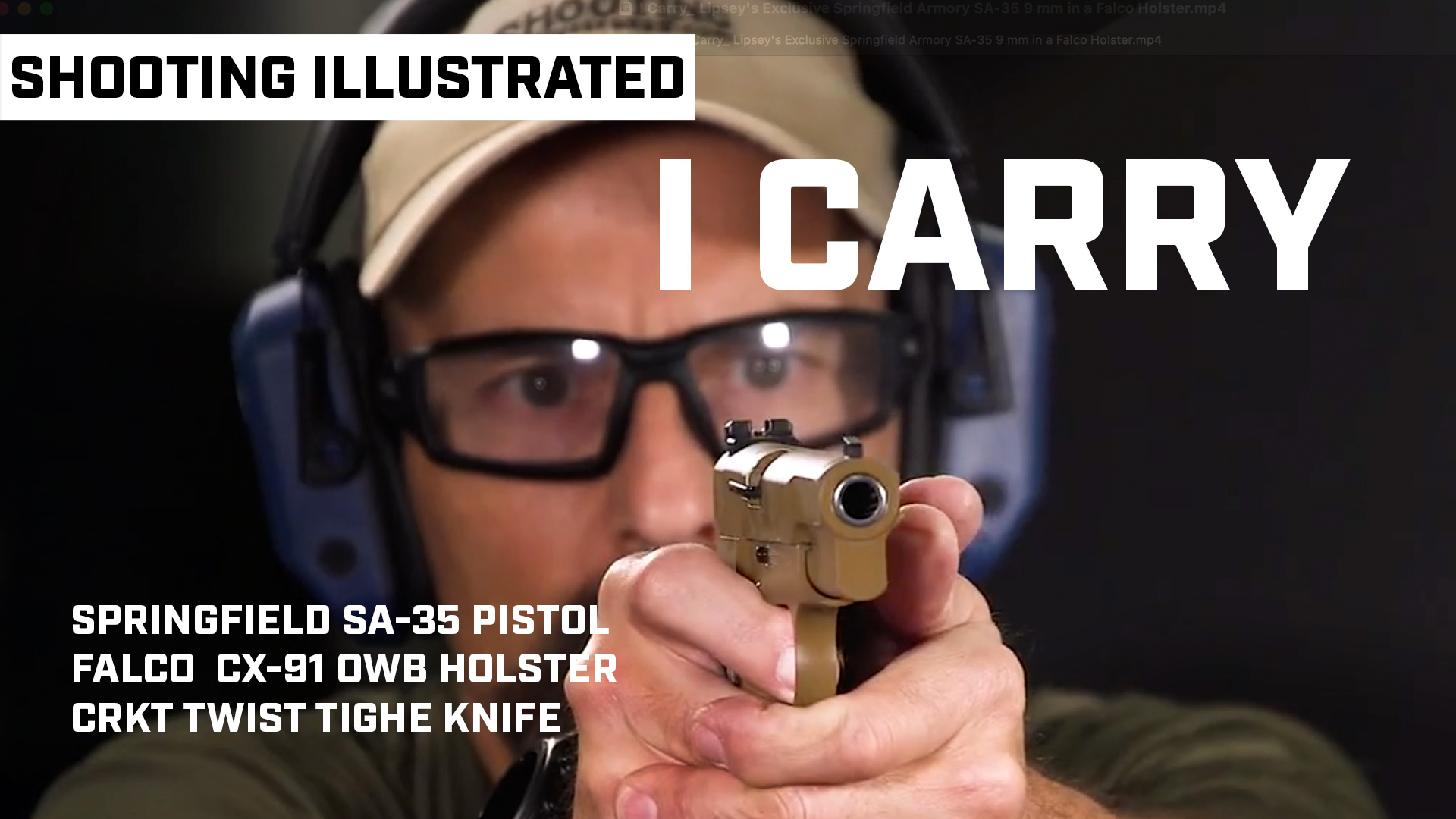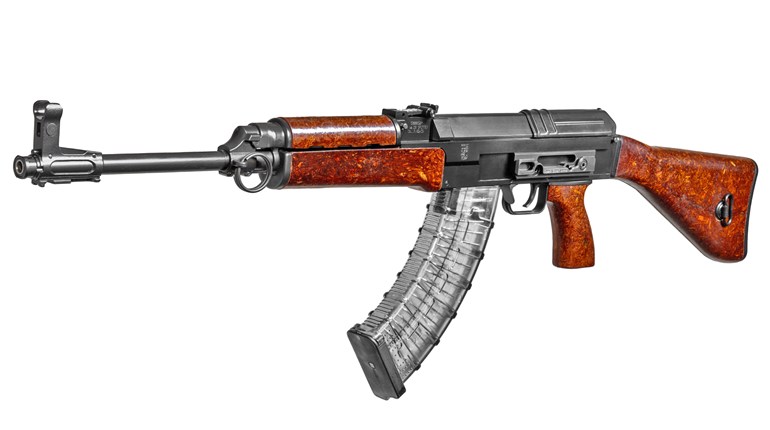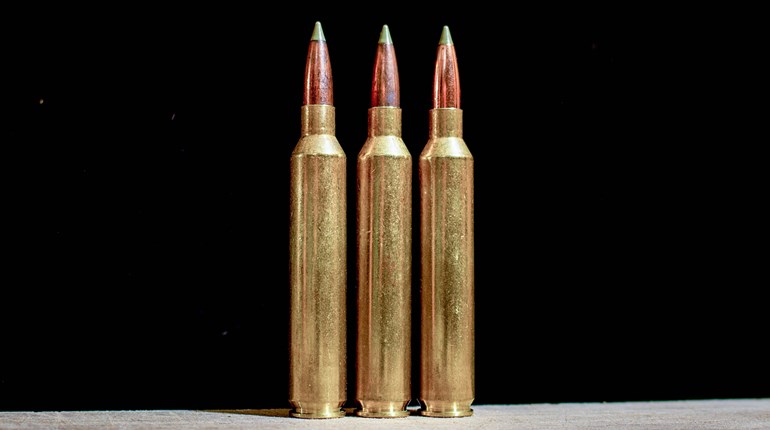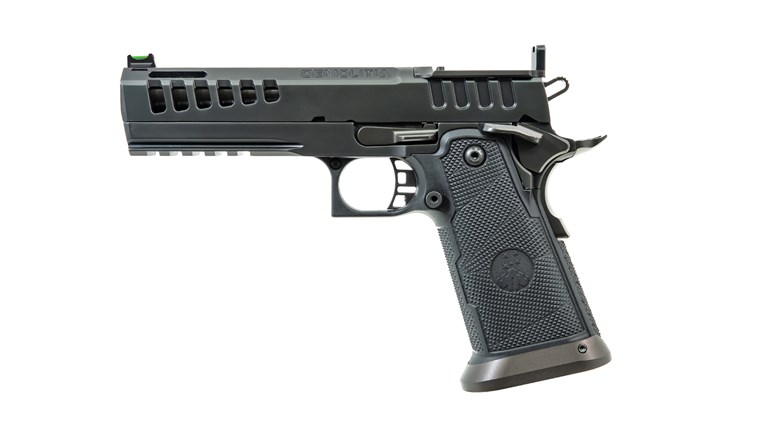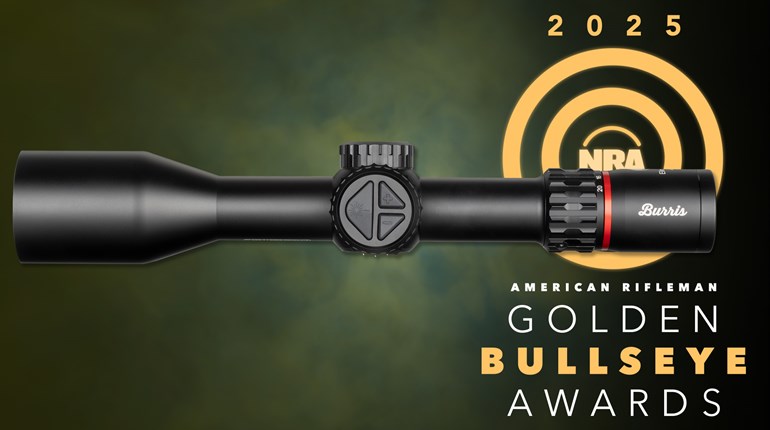
In the action shooting world, there is no widely-accepted or industry-standard training terminology other than that which is presented by a particular shooting school or firearms instructor. One of the most often misunderstood concepts tossed around the firearms training community is the term “follow through.”
Although the term ‘shot follow through’ may often refer what happens after the shot is mechanically released, such as keeping your eyes on the sights or dot, clicking the trigger back to reset and maintaining your muzzle alignment with the intended target, it is certainly not a staple across all action shooting disciplines to include combat and competition.
As much as I like to think of shooting as golfing with gunpowder, follow through in golf and even tennis differs greatly from pressing off well-placed rounds into the visual center of your target. This performance differentiation can be viewed from three diverse perspectives. One is body mechanics; another is visual processing and the third a mental approach.
Body Mechanics
In the world of golf follow through should mirror your backswing and finish with your weight properly shifted and distributed on your leading side. It is commonly considered an indicator of many things happening earlier in the swing, including tension in the arms and hands, your ability to release the clubhead through the ball and overall balance throughout the swing.
In the tennis world, follow through occurs after contact with the ball is made. The racket arm continues with rotation of the shoulder, pronation of the elbow and flexion of the wrist. It is what a tennis instructor means when they tell you to finish with the racket in front, or finish with the racket high, or finish with the racket up and over your shoulder. The fact of the matter is that there are many ways to follow through on your strokes, depending on what stroke you're hitting.
Swinging a club or a racket with the intent of successfully guiding ball placement is accomplished by an appropriate manipulation of force vectors throughout the striking process. Success is one hundred percent determined by flawless body mechanics and player consistency in their ability to execute those mechanics.
Shooting, unlike tennis or golf, does not require gross motor body mechanics such as a powerful club or racquet swing. When it comes to firearms, fast and accurate round placement is accomplished by muzzle stability, target alignment and good trigger control – not a redistribution of balance or an arm swing follow through. In fact, any unintended physical micro-inputs such as change in grip pressure, additional wrist or arm movement and the like, can alter alignment and bullet trajectory.
Body mechanics are necessary to maintain muzzle stability and manage the rise, recovery and realignment of recoil. Contrary to popular belief, physically prepping for the next shot is part and parcel of your current shot and not a secondary or follow through afterthought.
Visual Processing
Other than your own eyeballs, the sports of tennis and golf do not utilize a ‘ball placement sighting system.’ Albeit a highly developed skill, the majority physical effort is in the predetermined kinesthetic process of swinging a club or racquet to impact the ball toward an intended target area.
The consummate professional shooter can only shoot as fast as they can visually process information. In other words, you can’t correct something you can’t see. If you fail to observe your sights/ dot moving in any other direction than 6 to 12 during recoil, then there’s little or no chance of correcting any of it during the shooting process. Conversely if you have developed enough visual acuity to see what’s going on during the shooting process then you can make real-time micro-corrections as needed – all of which can occur in the span of 16/100ths of a second.
Visual processing is critical to timing the shot. Like any physical sport shooting also utilizes physical movement. Presenting a handgun (‘drawing’) from the holstered position initially consists of kinesthetic alignment dragging the muzzle out of the holster and orienting it toward the target. However, this is where the shooting world differs from any other.
An experienced shooter calls their shot prior to the trigger press and to optimize timing, a flawless trigger press must occur at the precise moment where kinesthetic alignment meets visual confirmation. It’s not possible to shoot any faster or more efficiently (if you want your desired outcome!) than what you can visually process. When visually processing in 16 to 20/100ths of a second there is no time for a secondary or follow through afterthought.
The Mental Approach To The Follow Through
Golf and tennis describe a swing as two separate parts: The swing itself which includes impact, and a follow through to that swing – which are considered two separate parts of a single process.
In the action shooting world ‘one completed shot’ is an integral part of the shooting process and is described as “bringing muzzle stability to alignment, pressing off the round and resetting the trigger (faster than the press) leaving it in an immediate ready state of next shot delivery.”
A well-placed completed shot consists of a good grip, a good hold and a good trigger control. Grip control and hold control warrant their own dissertations as each are sub-processes within a process. Good trigger control is considered the application of finger pressure to your trigger until the round is fired, immediately and without hesitation, to include any thought, resetting that trigger faster than the press in preparation for the next shot.
Even on a single-shot drill, resetting of the trigger is considered part and parcel of the shot itself. Good trigger control for high-performance shooters cannot be divided into two parts mentally or physically or it will significantly attenuate their split times (measurement of time to deliver multiple rounds on the same target) or transition times (measurement of multiple rounds on multiple targets).
When it comes to golf, tennis and shooting, control is king. In the action shooting world, grip control, hold control and trigger control are integral sub-components contributing to effective round placement. A single-step fire control process commensurate with rapid and accurate round placement consists of a complete cycle of action whereas the trigger remains in an immediate ready state for next shot delivery.
At such breakneck performance speeds as measured in tenths and hundredths of a second there’s no room for mechanical, visual, or even mental subdivision of the fire control process.












